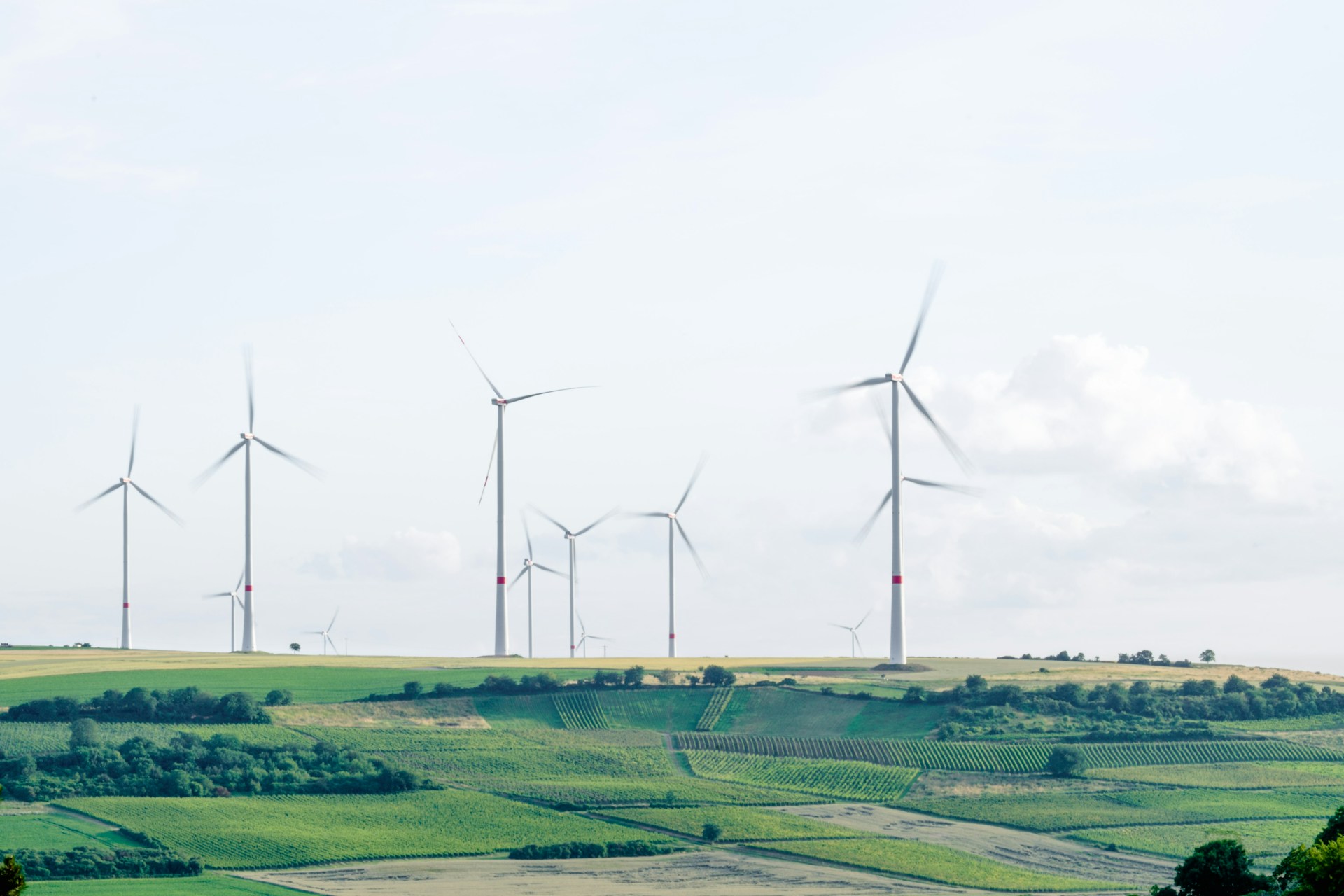
Understanding EU Climate Law: The Path to Net-Zero by 2050
As the effects of climate change become ever more apparent, the EU must intensify its efforts to reduce greenhouse gas emissions, boost energy efficiency and increase the adoption of renewable energy.
The EU Climate Law serves as the legal framework to support these efforts, ensuring that we stay on course to achieve climate neutrality by 2050. But what are the key policies underpinning this ambitious transition? In this article, our experts bring you an overview of the EU’s Climate Law, and discuss some of the most critical initiatives developed to shape Europe’s green future.
Want someone with deep experience and connections in the EU to help guide your sustainability strategy? Get in touch!
Contextualising EU Climate Law
Adopted in 2021, the EU Climate Law is a ground-breaking piece of legislation aimed at providing a robust legal framework for the bloc’s ambition of becoming climate-neutral by 2050. In addition to that main goal, it also establishes an interim target of reducing emissions by at least 55% by 2030, compared to 1990 levels. This legally binding framework should ensure that all EU policies and initiatives are aligned with the long term climate goals outlined in the EU Green Deal.
To enhance accountability and transparency, the EU Climate Law mandates regular progress assessments and the development of a climate adaptation strategy. Member States are required to submit national plans detailing their contributions to the EU’s climate goals, ensuring that each country plays its part in the collective effort. The law also encourages public participation and stakeholder engagement in the climate planning process, recognising the importance of involving citizens and businesses in the transition to a sustainable, low-carbon economy.
So let’s have a look at the core initiatives that make up the EU Climate Law.
EU Emission Trading System (ETS)
Launched in 2005, the EU Emission Trading System (ETS) is a cornerstone of EU Climate Law. Operating on a “cap and trade” principle, the ETS sets a limit on the total amount of greenhouse gases that can be emitted by the sectors under its scope, such as power generation, manufacturing industries, and aviation.
In this system, companies receive or purchase emission allowances, and each allowance permits the release of one tonne of CO2. If a company emits more than its allowances, it must purchase additional ones, encouraging companies to reduce emissions and invest in greener technologies. The cap on emissions is gradually reduced each year, ensuring that overall emissions fall over time.
As part of the 2023 revisions of the ETS Directive, the new aim is to reduce emissions by 62% by 2030, compared to 2005 levels, reflecting a higher level of ambition than the previous 43% target. Additionally, in 2027, the EU will introduce a second emissions trading system (ETS2), specifically focused on GHG emissions from fuels for road transport, buildings and industry. This expansion will further ensure that these sectors, which have historically been slow in reducing emissions, also play a significant role in achieving the EU’s 2030 climate goals.
Effort Sharing Regulation (ESR)
The Effort Sharing Regulation (ESR) complements the ETS by targeting industries not covered by the System. This includes sectors such as transport (excluding aviation), buildings, agriculture, small industry and waste, which collectively account for almost 60% of Europe’s GHG emissions.
Originally published in 2018, the ESR was updated in 2023, raising the emission reduction target from 29% to 40% by 2030, compared to 2005 levels.
The ESR adopts a country-specific approach, in which each Member State is assigned individual, binding targets based on their economic capabilities. These individual targets range from a 10% to 50% reduction, to ensure that all EU countries contribute fairly to the overall effort while also recognising different national circumstances.
Regulation on Land Use, Land Use Change and Forestry (LULUCF)
The Regulation on Land Use, Land Use Change and Forestry (LULUCF) focuses on the vital role that ecosystems play in carbon sequestration. Since preserved soil, plants and other biomass function as a carbon sink, removing CO2 from the atmosphere, the regulation determines that Member States ensure emissions from land use are compensated by at least equivalent carbon removals.
According to the LULUCF’s latest revision, this ‘no debit’ rule remains in effect from 2021 to 2025. From 2026 to 2030, the Regulation expands its scope to cover all managed land and sets an EU-wide net removals target for 2030, aiming for a 15% increase in net removals. At this second stage, compliance will also be streamlined using precise data and remote sensing technologies.
Renewable Energy Directive (REDIII)
The Renewable Energy Directive (REDIII) is a critical element in the EU’s climate framework, aiming to boost the share of renewable energy (RE) in the EU’s total final energy consumption (FEC) to at least 42.5% by 2030. This marks a significant increase from the previous target of 32%, with an aspirational goal of 45%. The binding nature of the 42.5% target reflects the bloc’s commitment to accelerating its transition into a more sustainable energy system.
In addition to these overarching targets, the Directive sets industry-specific goals for renewable energy use across sectors like transport, industry, and the heating and cooling of buildings.
The REDIII also encourages Member States to create national renewable energy action plans, which is critical considering that many are still behind in setting a national RE target in line with their expected contributions. In fact, the EU’s latest assessment points to a real risk of us falling short of the Directive’s main goal, with Member States’ efforts amounting to a collective RE share between 38.6 % and 39.3 % by 2030, as opposed to the 42.5% target.
Energy Efficiency Directive (EED)
Energy efficiency is another pillar of the EU’s climate law, and the revised Energy Efficiency Directive (EED) has been designed to ensure that the bloc reduces its overall energy consumption by 11.7% by 2030, compared to 2020 projections.
While the EED sets an EU-level binding target, there are no binding national targets, which has led to varying levels of ambition across Member States. Once again, recent assessments indicate that only a handful of countries seem to be on track to meeting their national energy consumption reduction targets, leading to an estimated 5.8% FEC reduction, instead of the 11.7% required.
Looking Ahead: What’s Next in EU Climate Law
While the EU has made significant strides in setting the framework for climate neutrality, many challenges remain. As estimations show, more intensive and coordinated efforts will be required from stakeholders across the board, if we are to meet our established targets.
As we look forward to the new mandate, a major debate looms over the EU’s 2040 climate target, with discussions centering on a potential 90% reduction in emissions. Translating this ambition into legislation will require careful consideration of economic impacts, the competitiveness of EU industries, and the intention to reduce administrative burdens for businesses.
As always, the Ohana team will continue to closely monitor these developments, offering insights and updates as the EU shapes its climate policies for the decades to come. But that’s not all. If you would like to ensure that your organisation will be at the forefront of this transition, get in touch! Our experts are ready to help you successfully navigate the EU landscape and design a sustainability strategy tailored to your goals.
Want someone with deep experience and connections in the EU to help guide your sustainability strategy? Get in touch!
Join our newsletter to keep up to date with the latest news and information coming out of the EU.


